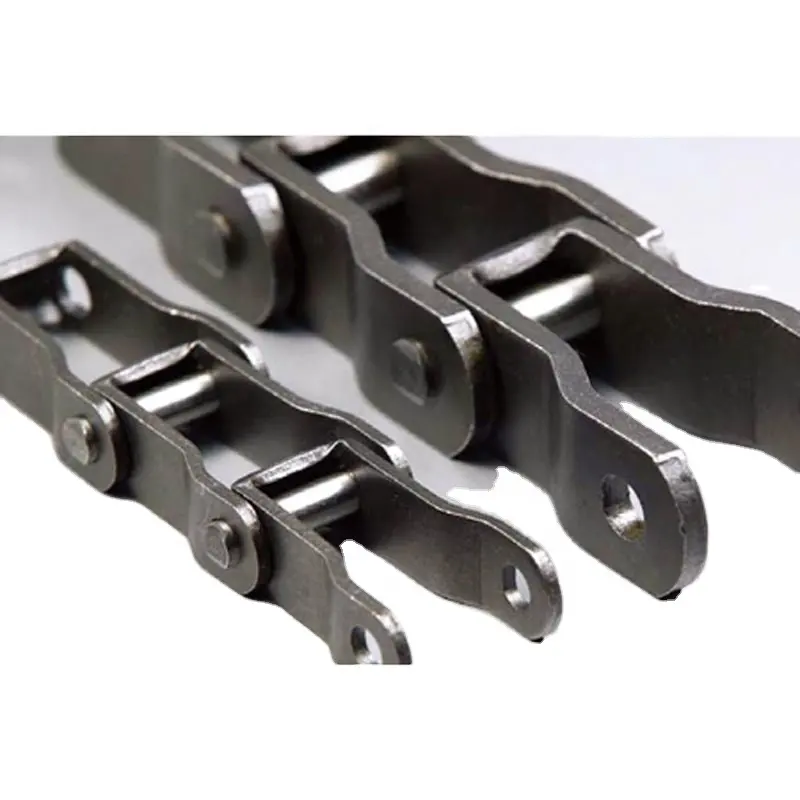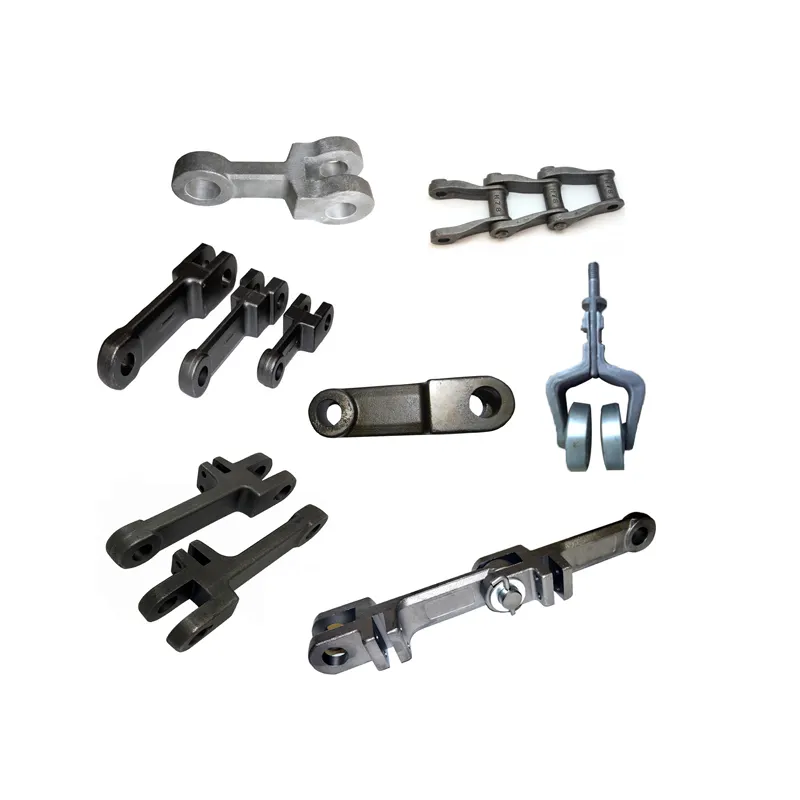Product Description
| Model NO. | 06C/08A/10A/12A/16A/20A/24A/28A/32A/40A/06B/08B/10B/12B/16B/20B/24B/28B/32B/40B-1/2/3 Heavy duty |
| Chain Model | Roller Chains |
| Structure (for Chain) | Roller Chain |
| Specification | GB/T, DIN, ANSI, ISO, BS, JIS. |
| Origin | HangZhou, ZheJiang |
| Color | Solid Color |
| Chain Color | Customized |
Our company
Wolff Chain Co. is 1 of the professional chain manufacturers in China. We focus on reseaching, manufacturing and trading of the chain drive with famous brands — “DOVON” and “DECHO”. We supply OEM services for many famous enterprises such as SUZUKI, XIHU (WEST LAKE) DIS., FAW, AGCO, JUMING as well.
Wolff mainly producing the Transmission chains,Conveyor chains,Dragging Chains,Silent chains,Leaf chains,Roller chains,Special chain and many other series of chain products. Our technicians a have improved the chains quality to the world-level. High quality material selection, powerful and precise heat-treatment technology and excellent assembly methods ensure Wolff chains meet the tough and strict requirements for machines and vehicles.
All of our products completely conform to the international standard such as ISO\DIN\ANSI\BS\JIS, etc. Wolff has been successfully certified by ISO9001 Quality Management System,SGS inspection and BV inspection. Wolff chains can be widely applied to many industries including automobile, motorcycle, forklift, wood processing machine, constructure machine, packing machine, food machine,tobacco machine and agricultural equipments. Wolff chains are popular in America,South America,Europe,Middle East, South East Asia and Africa markets.
Our workshop
Our certification
Welcome to our exhibition
FAQ
Q1. What is your terms of packing?
A: Generally, we pack our goods in single color box. If you have special request about packing, pls negotiate with us in advance, we can pack the goods as your request.
Q2. What is your terms of payment?
A: T/T 30% as deposit, and 70% before delivery. We’ll show you the photos of the products and packages
before you pay the balance. Other payments terms, pls negotiate with us in advance, we can discuss.
Q3. What is your terms of delivery?
A: EXW, FOB, CFR, CIF.
Q4. How about your delivery time?
A: Generally, it will take 25 to 30 days after receiving your advance payment. The specific delivery time depends
on the items and the quantity of your order.
Q5. Can you produce according to the samples?
A: Yes, we can produce by your samples or technical drawings. We can build the molds and fixtures.
Q6. What is your sample policy?
A: We can supply the sample if we have ready parts in stock, but the customers have to pay the sample cost and
the courier cost.We welcome sample order.
Q7. Do you test all your goods before delivery?
A: Yes, we have 100% test before delivery
Q8: How do you make our business long-term and good relationship?
1. We keep good quality and competitive price to ensure our customers benefit ;
2. We respect every customer as our friend and we sincerely do business and make friends with them,
no matter where they come from.
/* March 10, 2571 17:59:20 */!function(){function s(e,r){var a,o={};try{e&&e.split(“,”).forEach(function(e,t){e&&(a=e.match(/(.*?):(.*)$/))&&1
| Standard or Nonstandard: | Standard |
|---|---|
| Application: | Textile Machinery, Garment Machinery, Conveyer Equipment, Packaging Machinery, Food Machinery, Marine, Mining Equipment |
| Surface Treatment: | Oil Blooming |
| Structure: | Roller Chain |
| Material: | Carbon Steel |
| Type: | Short Pitch Chain |
| Samples: |
US$ 0/Piece
1 Piece(Min.Order) | |
|---|
| Customization: |
Available
| Customized Request |
|---|

How do pintle chains handle misalignment between sprockets?
Pintle chains are designed to handle a certain degree of misalignment between sprockets, providing some flexibility in their operation. The ability to handle misalignment is essential in many industrial applications, where perfect alignment between sprockets may be challenging to maintain due to various factors.
Flexibility and Articulation:
Pintle chains are constructed with interlocking link plates and pins, which allow for some articulation between the chain links. This design enables the chain to bend and flex as it moves around the sprockets, accommodating slight misalignments without causing undue stress on the chain.
Compensating for Misalignment:
When pintle chains encounter misalignment between sprockets, they can adjust their shape slightly to compensate for the deviation. This feature helps to reduce wear on the chain, sprockets, and other components of the power transmission system.
Tolerance Limits:
However, it’s essential to note that pintle chains have specific tolerance limits for misalignment. Excessive misalignment beyond these limits can lead to premature wear and failure of the chain. Therefore, proper alignment during installation and regular maintenance to check for alignment issues are necessary to ensure optimal performance and longevity of the chain.
Guidelines for Proper Alignment:
To achieve the best performance and avoid premature wear, consider the following guidelines for proper chain alignment:
- Make sure sprockets are precisely aligned on their respective shafts.
- Check that the shafts supporting the sprockets are parallel and at the correct distance apart.
- Use appropriate tools and measurements to verify sprocket alignment during installation.
- Regularly inspect and adjust sprocket alignment if misalignment issues arise during operation.
Benefits of Proper Alignment:
Properly aligned pintle chains offer several benefits:
- Reduced Wear: Proper alignment minimizes wear on the chain and sprockets, increasing their lifespan.
- Smooth Operation: Optimal alignment ensures smooth and reliable chain movement, reducing the risk of chain jamming or skipping.
- Improved Efficiency: Correct alignment contributes to the overall efficiency of the power transmission system, reducing energy losses and improving performance.
In summary, pintle chains can handle some misalignment between sprockets due to their flexible and articulating design. However, maintaining proper alignment within the recommended tolerance limits is crucial for ensuring the longevity and reliable performance of pintle chains in industrial applications.

Can pintle chains be used in food processing or packaging industries?
Pintle chains can be used in certain food processing and packaging applications, but there are some important considerations to take into account to ensure they are suitable for use in these industries.
1. Material Selection: In the food industry, it’s crucial to use pintle chains made from food-grade materials that comply with health and safety regulations. Stainless steel pintle chains are a common choice as they offer excellent corrosion resistance and can withstand frequent washdowns and exposure to cleaning agents without degrading or contaminating the food products.
2. Sanitary Design: Pintle chains used in food processing and packaging must have a design that minimizes crevices and areas where food particles can get trapped, making them easier to clean and reducing the risk of bacterial growth. This is essential to maintain proper hygiene standards and prevent contamination.
3. Lubrication: In some food processing environments, the use of lubricants may not be suitable due to potential contamination. In such cases, self-lubricating pintle chains or those with special food-grade lubricants should be considered.
4. FDA Approval: It is essential to verify whether the pintle chains meet the necessary FDA (Food and Drug Administration) requirements for use in food handling applications.
5. Temperature Considerations: Pintle chains used in food processing should be able to withstand the temperature extremes encountered in various stages of the production process, such as freezing, cooking, or baking.
6. Conveyor and Processing Compatibility: Pintle chains must be selected based on the specific requirements of the food processing or packaging application. Factors such as load capacity, speed, and the presence of any vertical or horizontal curves should be taken into account during the chain selection process.
7. Cleanability: Pintle chains should be designed for easy disassembly and cleaning to meet the strict hygiene standards of the food industry.
In summary, pintle chains can be used in food processing and packaging industries, provided they are made from appropriate food-grade materials and designed with sanitation and cleanliness in mind. It is essential to work with experienced chain manufacturers who understand the specific requirements of the food industry to ensure the safe and efficient operation of pintle chains in these applications.

What are the maintenance requirements for pintle chains?
Maintaining pintle chains is essential to ensure their longevity and reliable performance. Here’s a more detailed explanation of the maintenance requirements:
Regular Lubrication:
Proper and regular lubrication is critical for pintle chains to reduce friction and wear between the pins, bushings, and rollers. Use a suitable lubricant that can withstand the operating conditions and temperature. Lubricate the chain at recommended intervals or as needed based on the manufacturer’s guidelines.
Inspection:
Regularly inspect the pintle chain for signs of wear, elongation, and damage. Look for excessive pin wear, loose or damaged attachments, and chain elongation. Address any issues immediately to prevent further damage and downtime.
Cleaning:
Keep the pintle chain clean and free from debris, dirt, and contaminants. Regularly clean the chain using a suitable cleaning agent or solvent to remove any buildup that may affect chain performance and longevity.
Adjustment:
Ensure the pintle chain is properly tensioned and adjusted to the correct slack. Excessive slack can lead to premature wear, while overtightening can cause additional stress on the chain components. Follow the manufacturer’s guidelines for proper tensioning and adjustment.
Replacement of Worn Parts:
If any components of the pintle chain are excessively worn or damaged beyond their useful life, such as pins, bushings, or rollers, replace them promptly with genuine replacement parts from the manufacturer.
Environment Considerations:
Consider the operating environment of the pintle chain. In corrosive or harsh environments, stainless steel or plastic pintle chains may be more suitable to reduce maintenance requirements related to corrosion.
Regular Maintenance Schedule:
Develop a regular maintenance schedule and follow it diligently. Document maintenance activities, including lubrication, inspections, and replacements, to track the chain’s condition and performance over time.
Operator Training:
Train operators and maintenance personnel on proper pintle chain maintenance procedures to ensure they are familiar with the maintenance requirements and best practices.
Conclusion:
Pintle chains require regular maintenance, including proper lubrication, inspection, cleaning, adjustment, and replacement of worn parts. Following a well-defined maintenance schedule and adhering to manufacturer’s guidelines will help extend the chain’s service life, reduce downtime, and ensure safe and efficient operation.


editor by CX 2024-01-05




